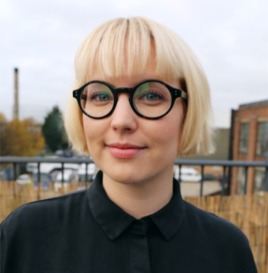
Text: Anikó Kuikka
This text is a translation. Not only is it translated from my mother tongue, Finnish, but it is also a translation of images into words. Before words became images, they were purely ideas. Ludwig Wittgenstein (Tractatus Logico-Philosophicus, 1921) thought that some things can only be expressed in non-verbal ways and claimed that thoughts and propositions are pictures. Our thinking is constantly being limited by language, as we can only speak of what we have words for. Language was invented for the purpose of human beings to be able to communicate with one another efficiently, but it also ties us to a certain culture, as we do not all share the same language. As eyes are physical extensions of our brain, I believe that seeing is a purer form of understanding.
Making art is making sense of the world. It’s the philosophy of seeing. Art can challenge the basic assumptions of our society by reacting politically and aesthetically against these norms. As the only knowledge we can perceive, comes from within, an artist can only show what to look at, not what to see. As an artist, I want to show the spectator something about the world, so that they will see it slightly differently.
“Perspective makes the single eye the centre of the visible world. Everything converges on to the eye as to the vanishing point of infinity. The visible world is arranged for the spectator as the universe was once thought to be arranged for god. There is no need for god to situate himself in relation to others: he is himself the situation.” John Berger, Ways of Seeing, 1972
The word perspective comes from the Latin word perspectiva that translates to “seeing through; seeing precisely; or understanding clearly”. It is a point of view that derives always by the individual. It is not merely a physical body that sees, but the perspective is all of what one sees through with. According to this idea the perspective is ultimately the identity. The identity is a construction of how we see ourselves, how others perceive us, what we dream of and how we live our lives. Life is like a stage, where our identities are roles that we are assigned to play out.
The individualistic postmodern generation likes to think of themselves (=ourselves) as individuals who themselves create and produce the identity they choose to. Still we are torn between wanting to belong, and wishing to be one-of-a-kind. This could be caused by the inherited and adopted identity that is formed according to how and where we were raised.
Finnish national identity was recreated (or branded) in the late 1800’s and early 1900’s by painting a picture of a raw beautiful nature and it’s hardworking, humble people. Artists started to portray the beauty and uniqueness of their homeland. This was called the golden era of Finnish art and was closely related to the oppression and national awakening. It also started the quest for the original and true national landscape that would encapsulate the particularities of Finland. The Finnish National epic, Kalevala (compiled by Elias Lönnrot, 1835) also played an important role in the development of Finnish national identity, affirming the Finnish language strife that culminated to the independence from Russia 100 years ago. These national romantic images, folklore and mythology are nested into the Finnish consciousness, and no matter how far we go, they will follow.
When I would look at a foreign landscape, I’d inevitable see it through the one I know. I was reluctant to admit how much my national herstory and heritage affected my everyday life and my artistic practice. The ultimate goal in life and art is to find some kind of a truth, so I felt obliged to address my finnishness. The only way to self-discovery and critical thinking is in re-evaluation, redefinition and acceptance. Defying pre-existing normative roles, is discovering them within yourself and bending them…. and making art about it.

Anikó Kuikka is an artist working with moving image installation. She is currently finishing her post graduate diploma at the Royal Academy of Arts and holds a Masters degree in fine arts from the time and space department at the Academy of Fine Arts, University of the Arts Helsinki. Anikó’s works depict the psychologically surreal and absurd nature of life and the construct of reality and illusion. She deals with identity, archetypes, the social power structures as well as the position of the viewer. The aesthetics and themes are often inspired by the domestic and mythological. Anikó’s moving image work has been shown and screened nationally and internationally in art exhibitions, screenings and film festivals. Her diploma piece ‘White Sugar’ will be shown at the RA Schools Show 22nd June – 2nd July 2017.